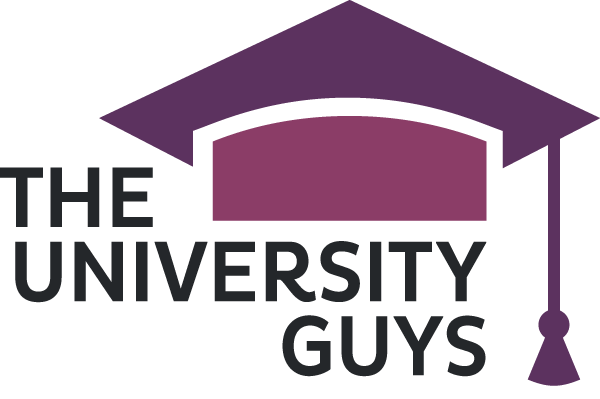To students at schools in the UK, the term ‘Ivy League’ is a useful one to base their US university search around. It’s a term that seems to mark quality, to show the group of universities that is the ‘best’, and a starting point around which to base a college search.
However, to experienced college counselors around the world, students who start their search focusing on the Ivy League are somewhat missing the point. The Ivy League is not analogous to the Russell Group or G5 in the UK, or the G8 in Australia, for one very simple reason: the Ivy League is exactly what it says – it is a sports league.
To give the full history, from the 1930s eight private US universities located relatively close to each other started playing American Football against each other. These universities – Harvard, Yale, Dartmouth, Cornell, Brown, Columbia, Princeton and Penn – shared a number of similar characteristics which meant that this made sense. Other universities that could have joined (and the debates about whether invitations were ever offered or not can be quite rancorous) did not share these characteristics: Colgate was too far away for easy travel, and Rutgers wanted to retain its public role within the state of New Jersey.
So why is the term so powerful? Well, the universities that compete (now in many, many more sports) in the Ivy League are all world-class universities. Within the 2019 US News & World Report rankings, Princeton is 1st, Harvard 2nd, Columbia and Yale tied for 3rd (alongside MIT and the University of Chicago), Penn is 8th, Dartmouth is 12th, Brown 14th and Cornell 16th. But those very stats show that at least 8 of the top 16 are not in the Ivy League.
This is where it gets complicated. Put simply, the Ivy League does not mean the ‘best’ US universities – from these same rankings, half of the top 16 are not Ivies. From this we end up with other groups: Public Ivies, Little Ivies and ‘Ivy Like’ universities.
Then we have the most important counselling point: despite their shared characteristics, the Ivy League universities also share some fundamental differences which mean that a student planning to apply to all eight is likely to be denied by at least six, because each is looking for a different type of student. A student who might be a realistic candidate for the sort of experience that Dartmouth offers, for example, might also apply to Middlebury, Williams or Bowdoin, while someone who fits UPenn might also be a good candidate for Stanford, Michigan or Duke. Applying to more than a couple of the Ivy League without understanding the big differences between them in terms of the sort of student they want is liable to end in disappointment.
Then finally we have the numbers game. The admissions rates for the Ivies tend to be well under 10%, under 5% in the case of Harvard, so these are hyper-selective institutions, able to choose between candidates with the best grades from school and highest test scores from the SAT or ACT. Added to this is the fact that, in 2018, the Ivies offered admission to a tad under 20,000 students in total: across the eight universities, assuming that no-one was offered a spot at more than one (which is unlikely to be the case), only 20,000 or so students were successful. Bear in mind that there are around three and a half million students in a year group at schools in the US each year, we are talking about there not being enough spots at the Ivies for even the top 1% of students. When you factor in international applicants, the numbers become crazier.
So, what should international applicants hooked on the idea of the ‘Ivy League’ do?
Well first, you need to realise that the Ivy League are not the only elite US universities. There are around 4,500 universities in the US, and the top 1% of those is 45 universities; to me, the top 5% of US universities would be of an equal standard to the ‘top’ UK universities. In short, you need to have a much broader sense of what a world-class US university is. Ivy League universities themselves know this, as their postgraduate admissions details show.
Second, you need to understand fit: not just how a university chooses students who fit it, but how students need to choose universities that they themselves ‘fit’: academically, socially and in terms of non-academic interests. To see a crucial element of this, see my article on distribution requirements and core curricula, something very different to the experience in the UK.
Thirdly, you need to be honest with yourself: in a university application process that has to reject almost all of its applicants, what makes you stand out. I’ll step away from the Ivies here and use Stanford as an example, a university which is under 5% for its admit rate. It might sound over-the-top, but you need to have something which makes you truly exceptional, a ‘hook’ in college counselling terminology. To flesh this out, Tilly Griffiths, who won a full scholarship from the UK to Stanford last year, raised over £5 million pounds for the international charity she set up and won a Pride of Britain award. What have you done that gives you a ‘hook’?
Now the reality behind all this is that there are tens, if not hundreds, of amazing universities in the USA. Any institution in the national rankings of either universities or of colleges (if you don’t get the difference, more here) is as good as anything in the UK and Europe, if not better.
I get the problem: you haven’t heard of Bowdoin or Vanderbilt or Rice or Williams, and these places might seem like a risk. Trust me. Google them. Check them out on discussion boards. If you happen to have contacts in the US, ask them if these are ‘good schools’. And while you’re at it, ask them if they’ve heard of Durham or Bristol or SOAS or Southampton… A world-class, elite university, highly-academic and top-ranked education can be had in the USA, and a proper search process can help you get there. Focusing just on the Ivy League is likely to be stressful and ultimately disappointing, something that the US university application process should never be.









